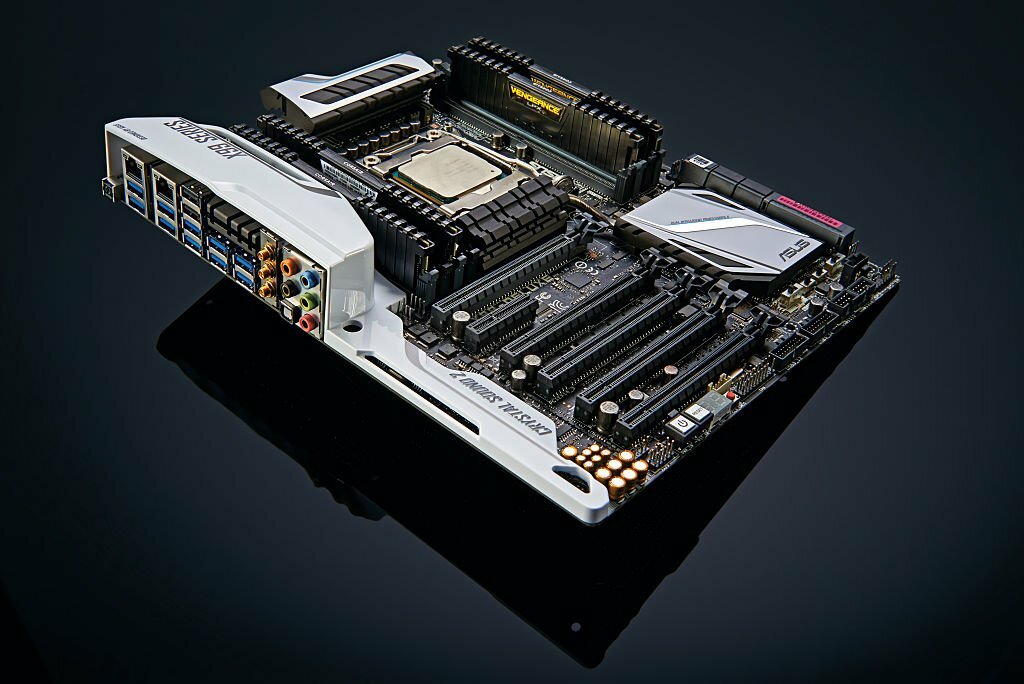Why Are Motherboards So Expensive? (Top 12 Reasons)
Table of Contents
Explore the intricacies of technology as we unravel the question: ‘Why are motherboards so expensive?’ Delve into the world of computing hardware and discover the factors driving the prices of these essential components.
In the realm of technology, the motherboard stands as the unsung hero, orchestrating the intricate symphony of electronic components within a computer. As we delve into the complexity of computing, the question that often arises is, “Why are motherboards so expensive?” In this comprehensive exploration, we unravel the top 12 reasons behind the price tag that accompanies these critical components.
Why Are Motherboards So Expensive?
The elevated cost of motherboards stems from multiple factors. One key aspect is the intricate design and manufacturing process. Motherboards house a multitude of components, such as CPU sockets, memory and expansion slots, and various chips, contributing to a costly production. Furthermore, the use of high-quality materials like multi-layered copper PCB and durable capacitors adds to the expense, ensuring prolonged performance and reliability. Research and development (R&D) costs for advancing motherboard technologies are substantial and are reflected in consumer prices. The consistent demand for motherboards, being a vital computer component, allows manufacturers to command premium prices. Consequently, motherboards often emerge as one of the priciest elements in a computer system. A fantastic read about Act Marketing Protocol.

1. Advanced Circuitry and Design
At the heart of every motherboard lies a labyrinth of intricate circuits and designs. The constant pursuit of innovation demands cutting-edge technology, pushing manufacturers to invest heavily in research and development. This quest for advancement inevitably contributes to the overall cost of producing state-of-the-art motherboards.
2. Quality of Materials
The durability and performance of a motherboard hinge on the quality of materials used in its construction. Premium materials, such as high-grade copper and robust polymers, elevate the manufacturing cost but ensure longevity and stability, providing users with a reliable computing experience.
3. Integration of Latest Technologies
Motherboards serve as the backbone for integrating the latest technological marvels. From supporting advanced processors to accommodating high-speed RAM and multiple GPUs, staying at the forefront of technology demands constant adaptation and refinement. This integration of cutting-edge features adds to the overall expense of producing a top-tier motherboard.
4. Miniaturization Challenges
As technology advances, the demand for smaller, more efficient motherboards intensifies. The process of miniaturization, while meeting the ever-shrinking footprint of modern devices, poses significant engineering challenges. Overcoming these challenges requires meticulous craftsmanship and sophisticated manufacturing processes, contributing to the higher cost of compact motherboards.
5. Stringent Quality Control Standards
Reliability is non-negotiable when it comes to motherboards. Rigorous quality control measures are implemented during every stage of manufacturing to ensure that each unit meets the highest standards. This commitment to quality incurs additional costs but guarantees a product that stands the test of time.
6. Complexity of BIOS Development
The Basic Input/Output System (BIOS) is the firmware that breathes life into a motherboard. Developing a sophisticated BIOS tailored to the diverse needs of users is a complex and resource-intensive task. This intricate software layer adds value but also contributes to the overall cost of motherboard production.
7. Market Dynamics and Supply Chain Challenges
Fluctuations in the global market and supply chain disruptions can have a profound impact on the cost of electronic components, including motherboards. Manufacturers must navigate these challenges, adjusting production costs accordingly to ensure a steady supply of high-quality motherboards.
8. Brand Reputation and Premium Pricing
Established brands in the motherboard industry invest heavily in building a reputation for reliability and performance. Consumers often associate these brands with quality, allowing manufacturers to command premium prices. While this may contribute to higher costs, it reinforces the trust that users place in these reputable brands.
9. Specialized Features for Enthusiasts
Motherboards designed for gaming or other specialized applications often boast features that cater to enthusiasts. Overclocking capabilities, enhanced cooling solutions, and RGB lighting are just a few examples. These added functionalities enhance user experience but come at an additional cost.
10. Intellectual Property Costs
In the competitive landscape of technology, intellectual property rights play a pivotal role. Manufacturers often invest in proprietary technologies and innovations, entailing licensing fees and royalty payments. These costs, while contributing to the uniqueness of a motherboard, are reflected in the final price.
11. Global Economic Factors
Motherboard production is not isolated from the broader economic landscape. Factors such as inflation, currency exchange rates, and labor costs influence the overall cost of manufacturing. Manufacturers must adapt to these economic dynamics, impacting the final retail price.
12. Environmental Compliance and Regulations
Meeting stringent environmental standards adds a layer of complexity to motherboard production. Compliance with regulations such as RoHS (Restriction of Hazardous Substances) requires manufacturers to invest in eco-friendly materials and processes, contributing to the overall cost.
Final Words
In conclusion, the seemingly high price of motherboards is a culmination of numerous factors, each intricately woven into the tapestry of technology. From the complexity of design to the integration of cutting-edge features, every facet contributes to the overall cost. Understanding these nuances provides a holistic perspective on why motherboards bear a premium price tag in the ever-evolving world of computing.
People Also Ask
Why is the motherboard price so high?
Motherboard prices fluctuate based on factors such as chipset, features, and brand. Premium motherboards equipped with advanced features, like multiple PCIe slots, Wi-Fi 6E, and USB 3.2 Gen 2×2, will inevitably command a higher price compared to more economical alternatives.
Do I need an expensive motherboard?
For routine activities such as web browsing, email, and video streaming, a mid-range motherboard generally meets requirements. Yet, for more resource-intensive tasks like gaming, video editing, or 3D rendering, opting for a pricier motherboard with enhanced performance and additional expansion slots is advisable.
Why is the Ryzen 7000 so expensive?
The higher cost of the Ryzen 7000 series CPUs compared to their predecessors can be attributed to various factors. These include the adoption of the new Zen 4 architecture, heightened manufacturing expenses, and challenges stemming from supply chain constraints.
Should I spend more money on a motherboard?
The decision to invest more in a motherboard hinges on your specific requirements. If you’re constrained by budget considerations, a mid-range motherboard should suffice. Yet, if you seek optimal performance or desire future-proofing, a high-end motherboard might justify the expenditure.



